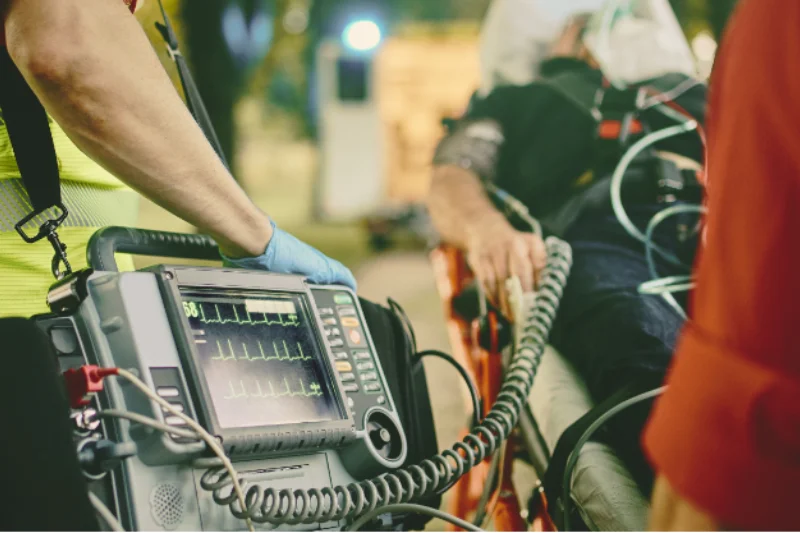
Introduction: The Intersection of Substance Abuse and Mental Health
Co-occurring illnesses, in which an individual has both substance misuse issues and mental health disorders, are becoming more common. Addressing both components is critical for successful recovery, as they frequently interact and exacerbate one another.
Understanding the link between substance addiction and mental health is the first step towards overcoming the complexity of co-occurring diseases, as recognized by certified addiction professionals and substance abuse professionals.
Identifying and Diagnosing Co-occurring Disorders
Co-occurring disorders can be difficult to diagnose since their symptoms overlap with those of substance misuse and mental health issues. A comprehensive assessment by clinicians knowledgeable in dual diagnosis is required to enable proper identification and treatment planning.
Depression, anxiety, bipolar disorder, and post-traumatic stress disorder (PTSD) are some of the most common mental health illnesses that coexist with substance misuse. (PTSD)
Integrated Treatment Approaches for Co-occurring Disorders
Individuals with co-occurring disorders benefit from integrated treatment approaches that address substance misuse and mental health at the same time. These approaches analyse the interplay of the illnesses and offer a comprehensive treatment plan.
Effective treatment strategies include integrated group therapy, dialectical behaviour therapy (DBT), and dual recovery programmes, which mix psychiatric and addiction treatment.
Success Stories: Overcoming the Challenges of Dual Diagnosis
There are numerous inspirational stories about people who have successfully recovered from co-occurring disorders. These success stories demonstrate the value of integrated treatment and how it can improve an individual’s entire well-being and sobriety.
Hearing about other people’s experiences might bring hope and motivation to those who are currently dealing with dual diagnosis problems.
Understanding the Complexities of Co-occurring Disorders
Co-occurring illnesses can be complicated, and many people have questions regarding their treatment and how to help someone with a dual diagnosis.
To obtain a better understanding of co-occurring illnesses and their management, it is critical to seek information from credible sources and speak with professionals who specialize in the field, such as certified addiction professionals and substance abuse professionals.
Conclusion: Embracing a Holistic Approach to Recovery
Navigating the issues of co-occurring illnesses necessitates a comprehensive approach that considers both substance addiction and mental health. Individuals who embrace integrated treatment can strive towards recovery in a more thorough and successful way.
With the correct help and tools, it is possible to overcome the challenges of dual diagnosis and live a happier and more satisfying life.

Introduction: The Importance of Family Involvement in the Recovery Process
Family support is essential during the addiction treatment process. Family members’ engagement can have a significant impact on the outcome of the rehabilitation process by providing necessary emotional support and stability, as recognized by certified addiction professionals and substance abuse professionals.
This article examines the significance of family support in addiction treatment and provides recommendations for effective family participation tactics.
Understanding the Family Dynamics in Addiction
Addiction has far-reaching consequences for family ties and dynamics, in addition to the individual. It may cause tension, conflict, and emotional anguish within the family unit. Understanding these interactions is critical for dealing with and healing from addiction-related family concerns.
Open communication, empathy, and professional help are essential for negotiating these obstacles and creating a supportive workplace. (SAMHSA: Family Therapy Can Help)
Strategies for Effective Family Support and Communication
Effective family support and communication are critical to a successful recovery path.
- Promoting open and honest communication: Creating a safe environment in which the individual in recovery can share their thoughts and feelings without being judged can be done by family (Thrive Family Counseling: Families and Addiction).
- Educating themselves about addiction: Knowing the nature of addiction allows families to provide informed support and reduces misconceptions.
- Participating in therapy together. Family therapy sessions can help address underlying issues while also improving communication and relationships.
Setting Boundaries and Self-Care for Family Members
Setting appropriate boundaries is critical for both the person in recovery and their loved ones. Boundaries help to strike a balance between supporting the loved one and ensuring the well-being of family members.
Self-care strategies, such as participating in hobbies, attending support groups, and prioritising mental health, are critical for family members to avoid burnout and maintain their own well-being. (National Institute on Drug Abuse: Family Checkup)
Conclusion: Embracing Family Support in Recovery
The importance of family support in addiction rehabilitation cannot be understated. Understanding family dynamics, using effective communication tactics, setting boundaries, and prioritising self-care can help families significantly contribute to their loved one’s recovery path.
Accepting family support is a critical step towards recovery and long-term sobriety. (Psychology Today: The Importance of Family Support)
Work with GMA Interventions: Family Therapy and Support Services
At GMA Interventions, we understand the importance of family support in addiction treatment. Our family therapy and support programmes are intended to help families heal and provide appropriate care for their loved ones.
Our skilled specialists, including certified addiction professionals and substance abuse professionals, help families navigate the recovery process. They provide skills and strategies to strengthen relationships and foster a supportive atmosphere.

Introduction: The Rising Threat of Fentanyl in the Opioid Crisis
The opioid crisis continues to affect communities across the United States, with fentanyl playing a significant role in rising overdose rates. As one of the most potent opioids accessible, fentanyl has a big impact on the problem.
This article attempts to shed light on the dangers of fentanyl overdose, providing insights into its potency, risks, and the prevention measures and treatment alternatives available to those suffering from fentanyl addiction, as understood by a certified addiction professional.
Explaining Fentanyl: Potency, Risks, and Overdose Symptoms
Fentanyl is a synthetic opioid that is up to 50 times more potent than heroin and 100 times stronger than morphine. Because of its enormous power, even a small amount can cause an overdose and death.
Overdose symptoms include reduced breathing, unconsciousness, and bluish skin. When fentanyl is taken with other medications, the risk of overdose increases, frequently without the user’s knowledge.
Understanding the Difference Between Fentanyl and Other Opioids
Fentanyl’s strength distinguishes it from other opioids, making it more hazardous and raising the risk of overdose. Understanding the distinctions between fentanyl and other opioids is critical for both patients and healthcare providers in order to avoid accidental overdoses and provide appropriate treatment. (CDC: Fentanyl Facts)
Recognizing the Signs of Fentanyl Addiction
Recognising the indications of fentanyl addiction is the first step towards getting help from a substance abuse professional. Signs include extreme drug cravings, withdrawal symptoms while not using, prolonged use despite negative consequences, and changes in behaviour or appearance. Early intervention is critical to successful recovery (Mayo Clinic: Recognizing Addiction)
The Impact of Fentanyl Overdose on Individuals and Communities
Individuals who overdose on fentanyl may have life-threatening respiratory depression, coma, and death. To avoid fatal consequences, overdose symptoms must be treated as soon as they appear. People who survive a fentanyl overdose may suffer long-term health consequences and psychological distress.
Communities around the country are dealing with the ramifications of the fentanyl crisis. The increase in overdose deaths puts pressure on emergency services, hospital institutions, and law enforcement. The social and economic implications are staggering, including increased healthcare expenditures, missed productivity, and the emotional toll on families and communities.
Preventative Measures and Treatment Options for Fentanyl Addiction
- Public Education
One important preventative step is public education about the hazards of fentanyl, as recognized by certified addiction professionals.
Raising awareness about the potency of fentanyl, the dangers of overdose, and the significance of seeking treatment for substance dependence can help save lives. Educational efforts should focus on high-risk demographics and highlight the availability of addiction treatment resources.
- Access to Naloxone
Increased access to naloxone, an opioid overdose reversal medicine, is critical to reducing fentanyl overdose deaths.
Naloxone should be easily accessible to first responders, healthcare providers, and anyone at risk of overdose. Training on how to give naloxone can help communities respond more effectively to overdose emergencies.
- Disrupting Illicit Fentanyl Supply
Efforts to interrupt the supply of illicit fentanyl are critical in combating the opioid epidemic. Law enforcement must collaborate to identify and dismantle fentanyl trafficking networks. International cooperation is also required to address the global scope of fentanyl manufacture and distribution.
Treatment Options for Fentanyl Addiction
- Medication-Assisted Treatment (MAT)
Medication-assisted therapy (MAT) is an effective way to treat fentanyl addiction. MAT combines methadone, buprenorphine, and naltrexone with counselling and behavioural therapy. These drugs serve to alleviate cravings and withdrawal symptoms, allowing people to engage in treatment and recovery. (SAMHSA: Medication-Assisted Treatment (MAT))
- Counselling and Support Groups
Addiction recovery relies heavily on counselling and support groups. Individual and group counselling can assist individuals in addressing the root causes of their addiction, developing coping skills, and establishing a supportive network. Support organisations like Narcotics Anonymous offer a sense of community and mutual support to those in recovery.
Conclusion: Addressing the Fentanyl Crisis
The fentanyl crisis is a complex problem that necessitates a comprehensive approach. Understanding the hazards of fentanyl overdose, implementing prevention measures, and assuring access to appropriate treatment are all critical steps towards solving this public health issue.
Working together, we can reduce the impact of fentanyl and help individuals who are addicted. (National Institute on Drug Abuse: Fentanyl DrugFacts)
Work with GMA Interventions
At GMA Interventions, we understand the difficulties associated with fentanyl addiction. Our team of professionals provides specialised services to individuals and families affected by the crisis.
Focusing on holistic rehabilitation, we offer support, education, and treatment alternatives tailored to each person’s needs. Contact us to see how we can help you or a loved one overcome addiction and live a better, drug-free life.













